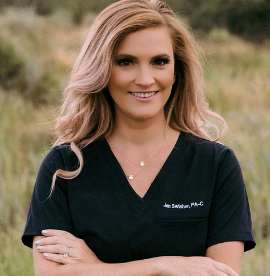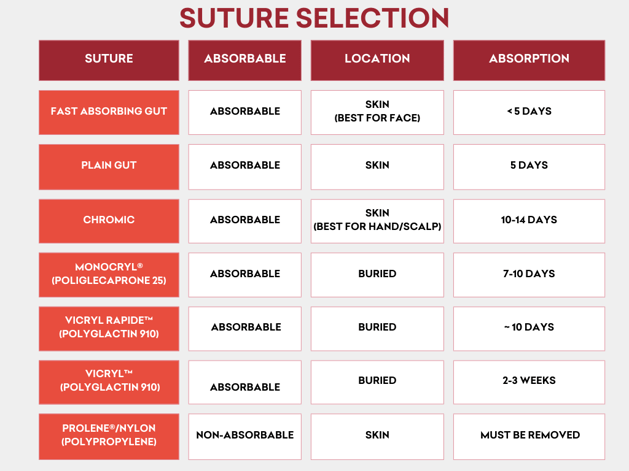Skin Deep: Selecting Suture Material for the Skin Surface

The choice between absorbable and non-absorbable suture materials for skin closure hinges on various factors, including patient comfort, follow-up availability, and ease of removal. During a recent appearance on ERcast, Dr. Justin Cohen discussed his plastic surgery approach to repairing facial lacerations with Dr. Christina Shenvi. Here are some key takeaways from Dr. Cohen for selecting suture material for closing the skin surface:
Key Takeaways 🔑- Fast-absorbing gut
- Absorbable material used in areas of skin with low tensile strength
- Loses about 50% of their strength within 4-5 days
- Great for the face, smaller/superficial lacerations, or when removal may be a challenge
- Can be difficult to work with and difficult to tie because they are so weak
- Plain gut
- Absorbable material with similar use in the skin as fast-absorbing gut
- Loses about 50% strength within 5-7 days
- The thicker the suture, the longer it will last
- Like fast-absorbing gut, it can break easily and be difficult to tie
- Chromic gut
- Absorbable material traditionally made of catgut but now sheep/goat
- Chromium coated to reduce tissue reactivity and decrease absorption time
- Loses about 50% strength in 10-14 days (not ideal for cosmesis, avoid on face)
- Good for a hand laceration or when you’d prefer to use absorbable material because removal may be a challenge
- PROLENE® (polypropylene)
- Non-absorbable material used on the skin
- Low tissue reactivity leads to less scarring
- Suture removal is required in 5-10 days
- Staples
- Used primarily in the ED to close scalp wounds
- Place ointment on top of staples to keep the wound moist
- Avoid getting hair caught in the closure - buried hair can cause epidermal inclusion cysts or infection due to naturally colonized bacteria
- Check out this video for a tutorial on how to remove staples

To Run or Not to Run 👟
Simple interrupted sutures are a mainstay of emergency medicine wound repair. You may have learned running stitches are the “lazy” way of suturing, and failure of any part of the repair can result in sacrificing the entire repair. However, running sutures are not only more efficient but can also provide better cosmesis by evenly distributing tension. Running sutures provide a continuous amount of tension over the entire incision. Interrupted sutures can allow for variable tension between each suture with one very tight stitch and a small gap without one.
Controversially, most plastic surgeons don’t consider lacerations emergencies and challenge the need for immediate repair, taking into consideration proximity to a plastic surgeon, patient preference, and provider comfort. While a majority of our plastic surgery colleagues are a delight to consult, it would behoove us as emergency medicine providers to silence our inner critic, pick up the needle, and give it a go, as practice makes perfect. Now if you find yourself navigating a difficult consultant: take a deep breath, just remember you are your patient’s best advocate, and give this talk from Rob Orman a watch!
Practice-Changing Education
Experience education that goes beyond theory. Explore Hippo Education’s offerings below.





